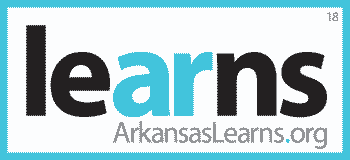The Arkansas Education Association/National Education Association (AEA/NEA) is certainly entitled to its own opinions. However, it is not entitled to its own facts. In resisting any change in the traditional public school system, their talking-point mantra is: “Charter schools perform no better than traditional schools.” Easily said; impossibly supported. Here’s the truth on how Arkansas’s open enrollment public charters compare with traditional public schools, with data straight from the Arkansas Department of Education’s most recent report.
According to the NORMES website, 27 ofthe 1,071 schools in Arkansas are open enrollment public charters, accounting for 2.5% of all schools. Based upon the most recent ESEA School Accountability Reports, on November 19, 2012, the Arkansas Department of Education released a list of the state’s public schools, characterized as:
- Exemplary Schools (also included in Achieving Schools)
- Achieving Schools
- Needs Improvement Schools
- Needs improvement Focus Schools – Met Year 1 Exit Criteria
- Needs Improvement Focus Schools
- Needs Improvement Priority Schools – Met Year 1 Exit Criteria
- Needs Improvement Priority Schools
These new categories resulted from the state’s receiving a waiver from No Child Left Behind. It should be noted that some of the previously higher performing public schools in the state are now labeled “Needs Improvement,” largely because they didn’t achieve targeted gains (e.g. Little Rock’s Forest Park Elementary, one of only three U.S. Department of Education Blue Ribbon Schools in Arkansas). It’s harder to sustain/improve gains, when you’re already performing at a very high level. That noted, here’s the breakdown of open enrollment public charters compared to traditional public schools in each category:
- Exemplary Schools (2 out of 5 – 40%)
- Achieving Schools (11 out of 341 – 3.2%)
- Needs Improvement Schools (16 out of 587 – 2.7%)
- Needs improvement Focus Schools – Met Year 1 Exit Criteria (0 out of 47 – 0%)
- Needs Improvement Focus Schools (0 out of 73 – 0%)
- Needs Improvement Priority Schools – Met Year 1 Exit Criteria (1 out of 11 – 9%)
- Needs Improvement Priority Schools (0 out of 37 – 0%)
In short, even though open enrollment public charters are only 2.5% of the public schools in Arkansas, they account for 40% of the five highest performing schools. Further, every open enrollment public charter in Arkansas except one is performing among the Arkansas Department of Education’s top three Status categories, at percentages higher than their overall percentage of schools. And, only one open enrollment public charter school is among the state’s lowest three Status categories (bottom 157 – 14.6% of schools).
But don’t take our word for it. The following is the state’s ESEA School Accountability Report, followed by the reports of each of the open enrollment public charters. The NORMES site gives users the ability to compare and contrast each school and district in Arkansas.
2012 Arkansas State ESEA Accountability Report (01/07/13)
- Arkansas Public Open Enrollment Charter Schools:
- Academics Plus (K-6) & Academics Plus (7-12)
- Arkansas Virtual Academy (K-6) & Arkansas Virtual Academy (7-8)
- Benton County School of the Arts (K-8)
- Covenant Keepers Charter Middle School (6-8) & Covenant Keepers Charter High School (9-12)
- Dreamland Academy (K-8) (Closed)
- eStem Charter Elementary (K-4) & eStem Charter Middle (5-8) & eStem Charter High (9-12)
- Haas Hall Academy (8-12)
- Imboden Area Charter (K-8)
- Jacksonville Lighthouse Charter (K-4) & Jacksonville Lighthouse Middle Charter (5-8)
- KIPP Blytheville College Prep (5-8)
- KIPP Delta Elementary Literacy Academy (K-4) & KIPP Delta College Prep School (5-8) & KIPP Delta Collegiate High School (9-12)
- Lisa Academy (6-8) & Lisa Academy High (9-12)
- Lisa Academy North Elementary (K-5) & Lisa Academy North Middle (6-8) & Lisa Academy North High (9-12)
- Little Rock Preparatory Academy (3-7)
- Pine Bluff Lighthouse Academy (K-4)
- SIA Tech High Charter (9-12)
